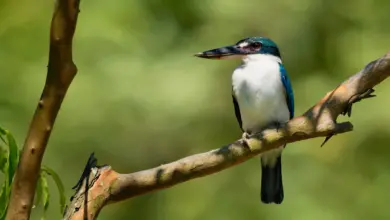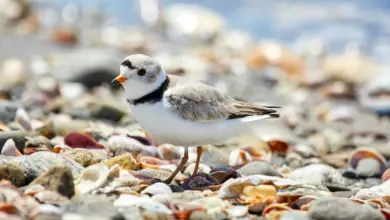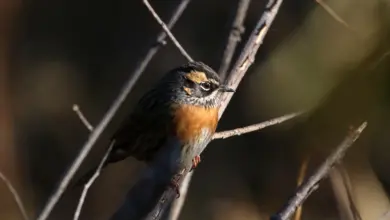The family Rallidae includes rails, crakes, coots, and gallinules. In Europe / Africa / Asia (the “Old World”), the long-billed species are often referred to as “rails” and the short-billed species as “crakes”.
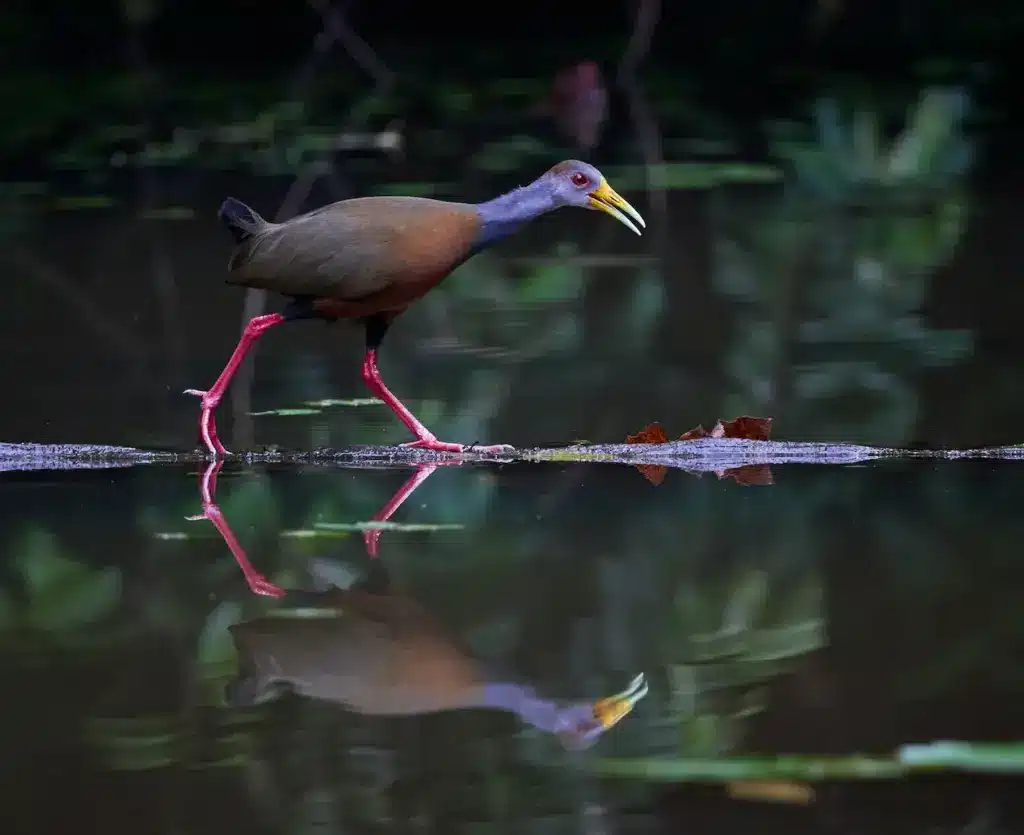
The family Rallidae includes rails, crakes, coots, and gallinules. In Europe / Africa / Asia (the “Old World”), the long billed species are often referred to as “rails” and the short-billed species as “crakes”. However, in North America, they are typically all called “rails” irrespective of the length of their bill. Some other large species are called gallinules and swamphens.
They typically occur in wetland areas, near lakes, swamps or rivers, where they occupy dense vegetation in damp environments. The only exception is the Corn Crake which inhabits farmland (hence is name).
They are small to medium-sized birds. They have strong legs and long toes and most can walk very fast. On the other hand, they have short wings and are weak fliers.
Some of the island species have become flightless and – due to introduction of terrestrial predators such as cats, rats and pigs – have become extinct.
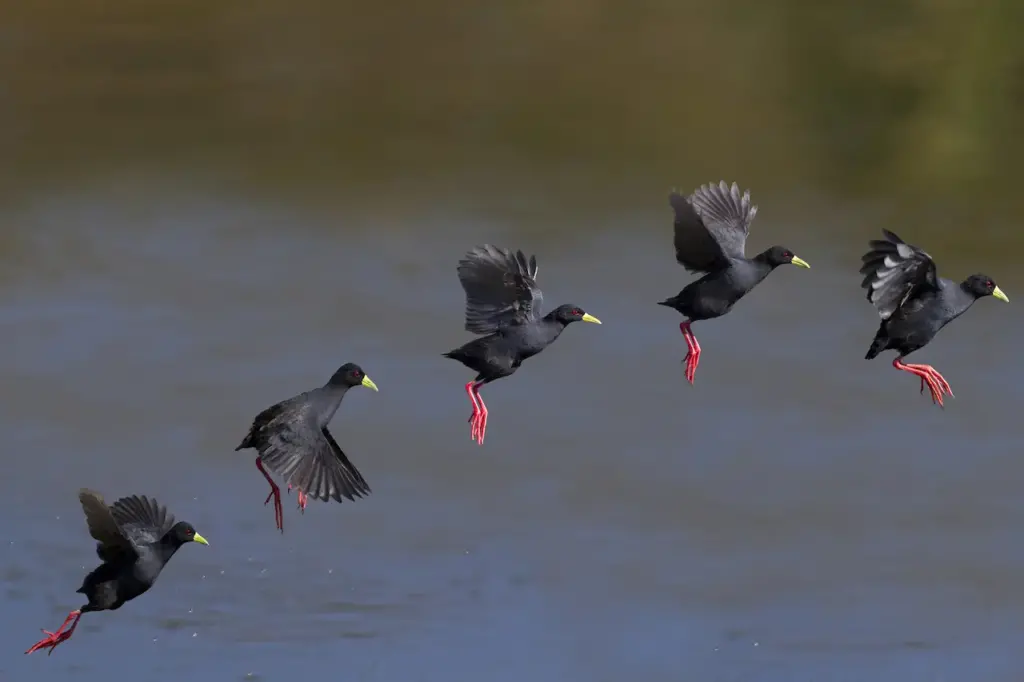
Species and genera
- Genus Himanthornis (Nkulengu Rail)
- Nkulengu Rail, Himantornis haematopus
- Genus †Nesotrochis (cave-rails; 3 species) (extinct)
- Genus †Diaphorapteryx (Hawkins’ Rail) (extinct) : This was a flightless extinct bird endemic to the Chatham Islands east of New Zealand. It is known to have existed only on the main islands of Chatham Island and Pitt Island. It is largely known from skeletal remains found in the kitchen middens of the original Polynesian inhabitants, the Moriori. The bird was approximately 16 inches tall and weighed about 4.5 pounds and is thought to have been primarily an insectivore. It was long thought that the Hawkins’ Rail was extinct prior to European discovery, however recent evidence suggests that the bird may have become extinct much later.
- Genus †Aphanapteryx (2 species) (extinct) : Aphanapteryx is a small genus of extinct birds of the rail family. The two flightless island species were Red Rail or Mauritian Red Rail, Aphanapteryx bonasia which became extinct on Mauritius ca 1700 Rodrigues Rail or Leguat’s Rail Aphanapteryx leguati which became extinct some time after 1730 on Rodrigues in the Mascarene Islands. Both species were readily attracted by red objects and made excellent eating, factors which ensured their downfall.
- Genus Sarothrura (flufftails; 9 species)
- White-spotted Flufftail, Sarothrura pulchra
- Buff-spotted Flufftail, Sarothrura elegans
- Red-chested Flufftail, Sarothrura rufa
- Chestnut-headed Flufftail, Sarothrura lugens
- Streaky-breasted Flufftail, Sarothrura boehmi
- Striped Flufftail, Sarothrura affinis
- Madagascar Flufftail, Sarothrura insularis
- White-winged Flufftail, Sarothrura ayresi
- Slender-billed Flufftail, Sarothrura watersi
- Genus Canirallus (2 species)
- Grey-throated Rail, Canirallus oculeus
- Madagascar Wood Rail, Canirallus kioloides
- Genus Coturnicops (3 species)
- Swinhoe’s Rail, Coturnicops exquisitus
- Yellow Rail, Coturnicops noveboracensis
- Speckled Rail, Coturnicops notatus
- Genus Micropygia (Ocellated Crake)
- Ocellated Crake, Micropygia schomburgkii
- Genus Rallina (forest rails; 8 species)
- Chestnut Forest Rail, Rallina rubra
- White-striped Forest Rail, Rallina leucospila
- Forbes’s Forest Rail, Rallina forbesi
- Mayr’s Forest Rail, Rallina mayri
- Red-necked Crake, Rallina tricolor
- Andaman Crake, Rallina canningi
- Red-legged Crake, Rallina fasciata
- Slaty-legged Crake, Rallina eurizonoides
- Genus Anurolimnas (3 species)
- Chestnut-headed Crake, Anurolimnas castaneiceps
- Russet-crowned Crake, Anurolimnas viridis
- Black-banded Crake, Anurolimnas fasciatus
- Genus Atlantisia (Inaccessible Island Rail)
- Genus Laterallus (10 species)
- Rufous-sided Crake, Laterallus melanophaius
- Rusty-flanked Crake, Laterallus levraudi
- Ruddy Crake, Laterallus ruber
- White-throated Crake, Laterallus albigularis
- Grey-breasted Crake, Laterallus exilis
- Black Rail, Laterallus jamaicensis
- Junin Rail, Laterallus tuerosi
- Galapagos Rail, Laterallus spilonotus
- Red-and-white Crake, Laterallus leucopyrrhus
- Rufous-faced Crake, Laterallus xenopterus
- Genus Nesoclopeus (1 living species) (1 recently extinct)
- Bar-winged Rail, Nesoclopeus poecilopterus (extinct)
- Woodford’s Rail, Nesoclopeus woodfordi
- Genus Gallirallus (11-12 living species) (3-5 recently extinct)
- Genus †Cabalus (Chatham Rail) (extinct; sometimes included in Gallirallus)
- Chatham Rail, Cabalus modestus (extinct)
- Genus Rallus (some 9 living species)
- Genus Lewinia (3 species) (sometimes included in Rallus)
- Lewin’s Rail, Lewinia pectoralis
- Brown-banded Rail, Lewinia mirifica
- Auckland Rail, Lewinia muelleri
- Genus Dryolimnas (1 living species) (1 recently extinct)
- White-throated Rail, Dryolimnas cuvieri
- Réunion Rail, Dryolimnas augusti (extinct)
- Genus Crecopsis (African Crake) (sometimes included in Crex)
- African Crake, Crecopsis egregia
- Genus Crex (Corn Crake)
- Genus Rougetius (Rouget’s Rail)
- Rouget’s Rail, Rougetius rougetii
- Genus Aramidopsis (Snoring Rail)
- Snoring Rail, Aramidopsis plateni
- Genus Aramides (wood-rails, 8-9 living species) (possibly 1 recently extinct)
- Red-throated Wood Rail, Aramides gutturalis (extinct, doubtful species)
- Little Wood-rail, Aramides mangle
- Rufous-necked Wood-rail, Aramides axillaris
- Grey-necked Wood-rail, Aramides cajanea
- Brown Wood-rail, Aramides wolfi
- Giant Wood-rail, Aramides ypecaha
- Slaty-breasted Wood-rail, Aramides saracura
- Red-winged Wood-rail, Aramides calopterus
- Genus Amaurolimnas (Uniform Crake)
- Uniform Crake, Amaurolimnas concolor
- Genus Gymnocrex (3 species)
- Bald-faced Rail, Gymnocrex rosenbergii
- Talaud Rail, Gymnocrex talaudensis
- Bare-eyed Rail, Gymnocrex plumbeiventris
- Genus Amaurornis (9 species)
- Brown Crake, Amaurornis akool : The Brown Crake (Amaurornis akool) is a waterbird in the rail and crake family Rallidae found in South Asia.
- Plain Bush-hen, Amaurornis olivacea
- Isabelline Bush-hen, Amaurornis isabellina
- Rufous-tailed Bush-hen, Amaurornis moluccana
- White-breasted Waterhen, Amaurornis phoenicurus
- Black Crake, Amaurornis flavirostra
- Sakalava Rail, Amaurornis olivieri
- Black-tailed Crake, Amaurornis bicolor
- Talaud Bush-hen, Amaurornis magnirostris
- Genus †Mundia (Ascension Island Rail) (extinct; formerly included in Atlantisia)
- Ascension Island Rail, Mundia elpenor (extinct)
- Genus Porzana (crakes; 13 living species) (4-5 recently extinct)
- Genus Aenigmatolimnas (Striped Crake)
- Striped Crake, Aenigmatolimnas marginalis
- Genus Cyanolimnas (Zapata Rail)
- Zapata Rail, Cyanolimnas cerverai
- Genus Neocrex (2 species)
- Colombian Crake, Neocrex colombianus
- Paint-billed Crake, Neocrex erythrops
- Genus Pardirallus (3 species)
- Spotted Rail, Pardirallus maculatus
- Blackish Rail, Pardirallus nigricans
- Plumbeous Rail, Pardirallus sanguinolentus
- Genus Eulabeornis (Chestnut Rail)
- Chestnut Rail, Eulabeornis castaneoventris
- Genus Habroptila (Invisible Rail)
- Invisible Rail, Habroptila wallacii
- Genus Megacrex (New Guinea Flightless Rail)
- New Guinea Flightless Rail, Megacrex inepta
- Genus Gallicrex (Watercock)
- Genus †Aphanocrex (Saint Helena Swamphen) (extinct; formerly included in Atlantisia)
- Genus Porphyrio (swamphens and purple gallinules; 6 living species) (2-5 recently extinct; includes Porphyrula and Notornis)
- Genus Gallinula (gallinules; 7-9 living species) (1-3 recently extinct; includes Pareudiastes and Edithornis)
- Genus Fulica (coots; c.10 living species) (1 recently extinct)
- Ibiza Rail (Rallus eivissensis)

